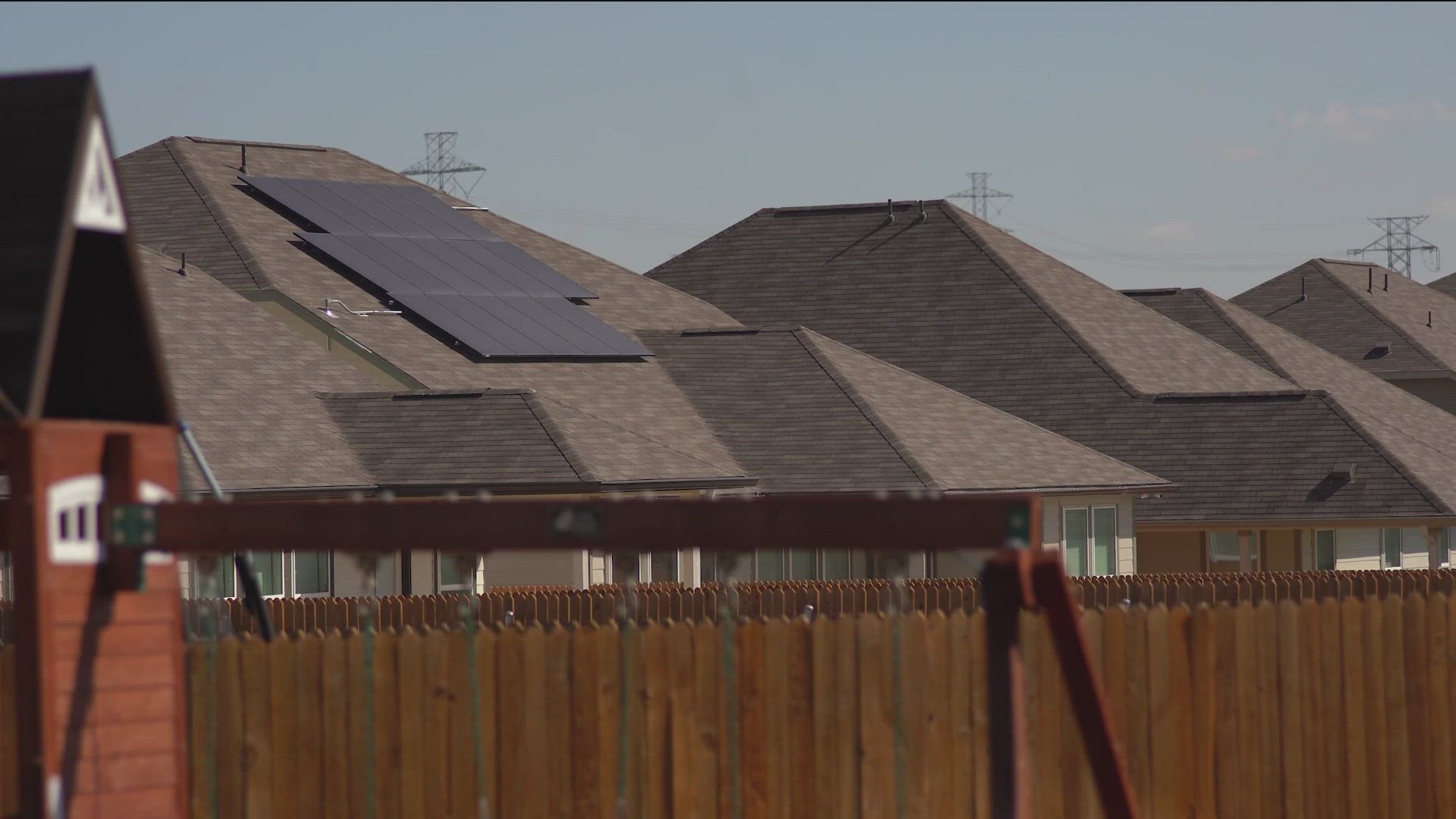AUSTIN, Texas — Beware before you buy solar panels: the sales pitch for rooftop solar may be misleading.
In Texas, the electrical grid is regulated by the Public Utility Commission. The Electric Reliability Council of Texas (ERCOT) manages the grid for 90% of the state, with El Paso, parts of the Texas Panhandle and areas in East Texas being the only areas in the state connected to other U.S. power grids.
Unless connected to a whole-house battery, solar panels on residential rooftops send the electricity to the distribution grid using photovoltaic (PV) cells. Homes pull power from the grid.
The government and consumer watchdog group Public Citizen released a report looking into 141 non-competitive Texas utility companies such as Austin Energy.
The data released shows it may take decades to break even on the cost to buy and install rooftop solar. Financing the panels may not ever be cost-effective.
Kamil Cook, an associate for the Climate and Clean Energy Program for Public Citizen, said utility companies need better compensation rates.
“It can be the difference between in 25 years saving $40,000 or still being in the hole, $6,000, for example,” Cook said.
The report shows that at least 35 noncompetitive utility companies in Texas charge an additional monthly fee to customers with solar panels. Those fees average an additional cost of $15.55 per month.
“A statewide policy that establishes a fair rate of compensation for customer-sited solar is sorely needed,” the report shows.
“We don't think it's fair at all to the consumers. For a lot of ratepayers/consumers, it's dissuading them from investing in a solar system which would help with reliability of the grid, would help them save money, could help them, you know, improve our climate goals of the city and the state,” Cook said.
The report ranked Austin Energy among the best for customers looking to buy solar panels for their home.
"One utility, Austin Energy, uses a Value of Solar (VOS) rate, which credits customers for all on-site solar production at a set rate, regardless of whether the energy is used on-site or exported to the grid. This rate is based on both avoided costs to the utility and environmental benefits from customer-sited solar. Austin Energy also uses tiered rates for energy consumption. The VOS for customer-sited solar is 100% of the consumption rate for customers who use 1,000 kWh per month," the report shows.
"The Value of Solar rate It is intended to provide a fair value to solar customer and non-solar customers, encourage solar adoption, and meet the progressive environmental goals set by Austin City Council. Austin Energy’s Customer Renewable Solutions team is proud to serve Austin residents and businesses through providing incentives, education and outreach," a spokesman for Austin Energy said.
Google’s Project Sunroof is a tool to show people how long, on average, it would take for a person to break even on solar panel costs.
The website uses Google Maps to show which areas on a home’s roof get the most sunlight. People can use their average bill to learn how many panels would be needed, the estimated average cost for buying, the cost for leasing and the cost for a loan.
It does not include tax incentives nor local rebates.
Cook says the PUC and ERCOT need to initiate a comprehensive study.
The report shows, “This assessment could take into account a variety of factors, many of which are described in detail in the National Standard Practice Manual for Benefit-Cost Analysis of Distributed Energy Resources.
“Values to utilities and the grid that should be assessed include:
- “Generation benefits: avoided costs of energy generation, capacity, environmental compliance, and ancillary services and reduced market prices"
- “Transmission benefits: conserving transmission capacity and avoiding transmission system losses."
- “Distribution system benefits: conserving distribution system capacity, avoiding distribution system losses, reducing distribution system operations and maintenance costs, and maintaining distribution system voltage."
- “Other benefits, including improved reliability and resilience, reduced risks, and reduced bad debt and disconnections."
“Values to society that should be assessed include:
- “Reduced greenhouse gas emissions"
- “Reduction of other air, water and land pollution and associated public health benefits."
- “Local and statewide economic benefits, including job creation."
- “Improved community resilience”
“We would like to see a study that makes it so every utility has the same framework by which they can understand how customers with solar in their area contribute to the grid and contribute to the utility,” Cook said.

